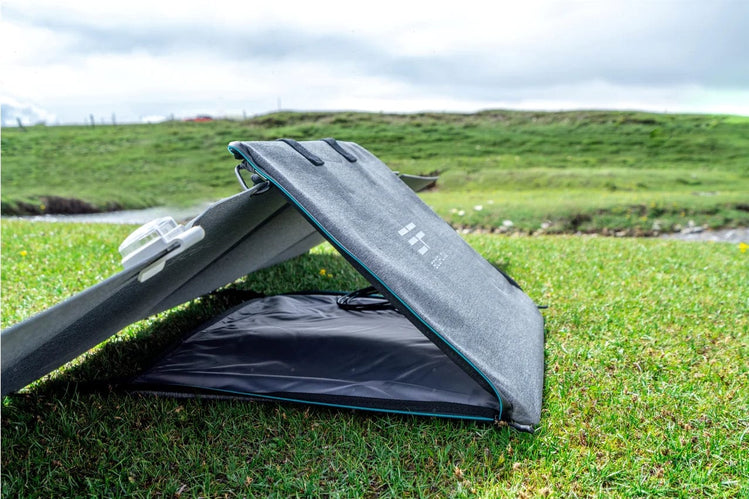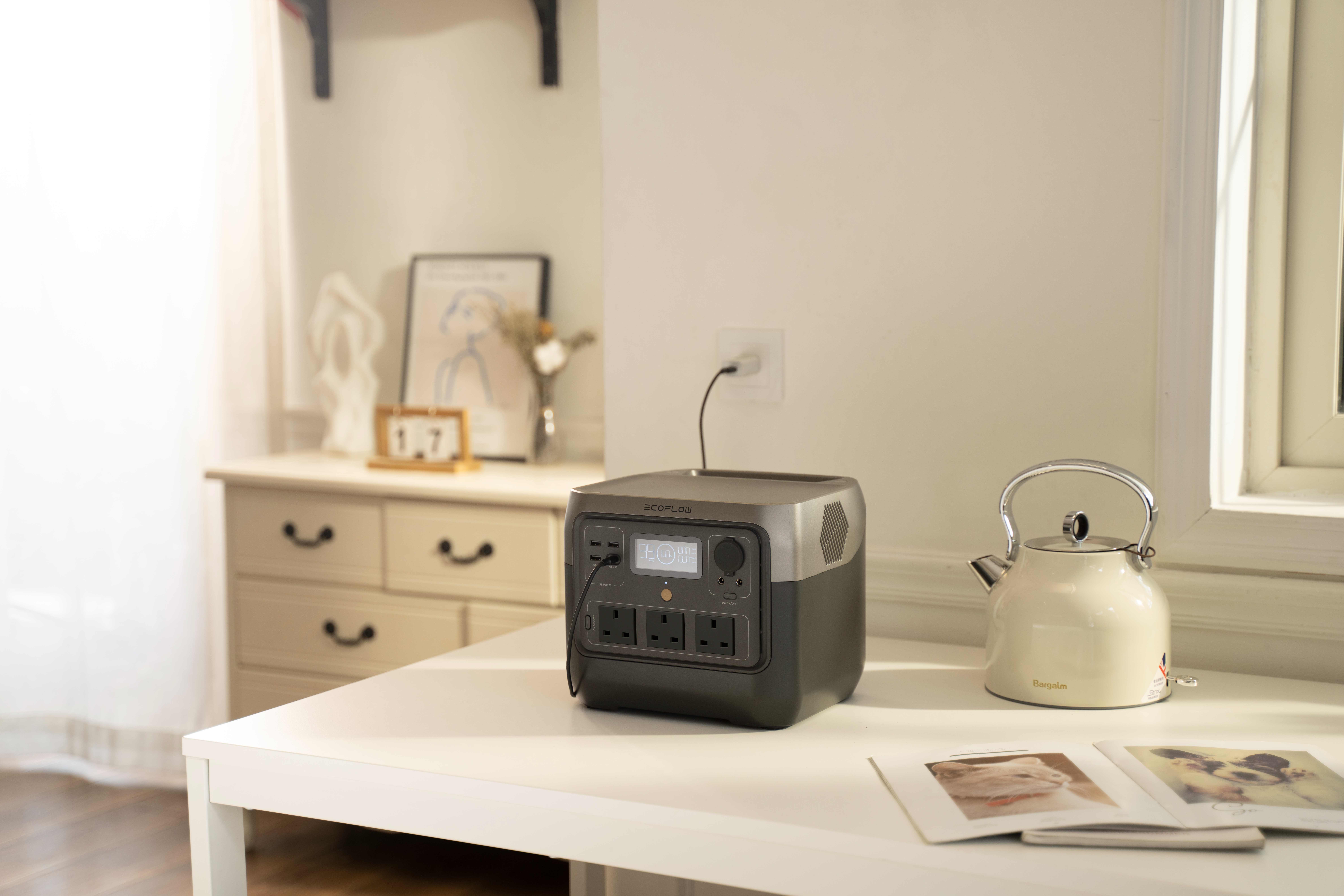- What Are Small Solar Panel Kits
- Are Small Solar Panel Kits Worth It?
- How Many Watts Can a Small Solar Panel Kit Run
- What Is a Good Home Battery Size for a Small Solar Panel Kit
- How to Expand Your Small Kit Later
- How to Take Good Care of a Small Solar Kit
- Can a Portable Power Station Replace a Small Solar Kit
- Small Solar & Home Batteries: Powering Your Daily Life
How to Pair Small Solar Panel Kits with Home Battery Storage Systems
- What Are Small Solar Panel Kits
- Are Small Solar Panel Kits Worth It?
- How Many Watts Can a Small Solar Panel Kit Run
- What Is a Good Home Battery Size for a Small Solar Panel Kit
- How to Expand Your Small Kit Later
- How to Take Good Care of a Small Solar Kit
- Can a Portable Power Station Replace a Small Solar Kit
- Small Solar & Home Batteries: Powering Your Daily Life
Not everyone needs a rooftop solar system with panels stretching across half the house. Sometimes, all you want is enough power to keep your phone charged, your lights on, or your fridge humming through a blackout. That’s where small solar panel kits and home battery storage come in. They’re compact, flexible, and affordable—ideal for people who live small, move often, or just want to dip a toe into solar. But to get the most out of them, you need to match your solar kit with the right battery and understand how the system works together. This guide walks you through the essentials, from choosing your kit to expanding and maintaining it over time.
What Are Small Solar Panel Kits
Small solar panel kits are starter-size solar systems. They usually include:
- 1 to 4 solar panels (each panel often under 200 watts)
- A charge controller
- Basic wires and connectors
- Sometimes a small inverter
They are not connected to the main power grid. Most solar panel kits are used for portable needs or light home use.
Are Small Solar Panel Kits Worth It?
Yes, small solar panel kits can be a smart choice. For it provides benefits in many ways:
- Great for light daily use. They charge phones, run fans, light up rooms, or keep small fridges cool. For many people, that’s enough.
- Useful in emergencies. When the power goes out, a small kit can keep lights and phones running. You stay connected and safe.
- Perfect for renters or small spaces. Not everyone owns a house. If you live in an apartment or RV, these kits give you clean power without major changes.
- Easy to move and expand.Most kits are lightweight. You can take them to a new place or add more panels later.
- Low entry cost. Compared to full home systems, small solar kits are much cheaper. Some start under $200. It’s a good first step into solar.
Still, they are not for every need. They won’t power ovens, heaters, or large air conditioners. But for simple tasks, small solar kits can be very helpful and totally worth it.
How Many Watts Can a Small Solar Panel Kit Run
Think of watts as power. The more watts you have, the more devices you can run. A small solar panel kit usually produces between 100 to 800 watts total, depending on the number and size of the panels.
Here’s what different watt sizes can do on a sunny day:
| Kit Size (Watts) | Power Output per Day (Approx.) | Devices You Can Run |
|---|---|---|
| 100W | 300Wh | Phone, LED light |
| 200W | 600Wh | Laptop, fan |
| 400W | 1200Wh | Mini fridge, router |
| 800W | 2400Wh | TV, coffee maker |
(Wh = watt-hours = total energy over time)
Cloudy weather or shade will reduce the energy you get. The panels also work best when they face the sun directly. A small tracking stand can help increase output.


What Is a Good Home Battery Size for a Small Solar Panel Kit
To get the best use from a small solar panel kit, you need to pair it with the right battery. The battery should match how much energy your panels make in a day. For example, if your panels make about 600 watt-hours (Wh) per day, your battery should hold at least 600Wh. This way, you can store all the energy and use it when the sun goes down.
Always check:
- How much power your panels can produce each day
- How much energy you want to use at night or during bad weather
- The battery’s size (in Wh or kWh)
It’s okay to start with one small battery. You can add another later if you need more power. Some people like having two smaller ones instead of one big one. Smaller batteries are easier to move and replace.
Most people choose lithium-ion batteries. They are light, safe, and work well for many years. Some models also show how full they are, which helps you plan your power use better.
Use the chart below as a quick guide:
| Panel Output Per Day | Suggested Battery Size |
| 300Wh | 300–500Wh |
| 600Wh | 600–1000Wh |
| 1200Wh | 1200–1500Wh |
| 2400Wh | 2000–3000Wh |
You don’t need to match numbers exactly. Just stay close. A battery that’s a little bigger than your solar output gives you more backup time.
How to Expand Your Small Kit Later
A small solar kit is a great start, but what if you want more power later? Good news: many kits can grow. You just need to plan the right way.
Check the Charge Controller Limit
The charge controller is the part that manages how solar power goes into the battery.
Look at the user guide to see the max watts or amps it allows. If your new panels go over that number, you need to upgrade the controller.
Match Panel Voltage and Type
When adding more panels, try to use the same brand, voltage, and type (like monocrystalline).
Mixing different kinds can lower power or damage the system.
Connect panels in parallel (same voltage, more current) or in series (higher voltage, same current)—but only if your controller supports it.
Add a Bigger Battery
If you add more panels, your battery should grow too. More solar power means you can store more energy.
You can buy a larger battery or connect two of the same type.
Keep both batteries at the same charge level before linking them, or one may drain the other.
Upgrade the Inverter (If Needed)
More power also means bigger loads. If your devices need more watts than before, your inverter might need an upgrade.
Choose one with higher watt capacity and pure sine wave output for sensitive electronics.
Use Stronger Cables and Fuses
Higher current needs thicker wires. This reduces heat and keeps things safe.
Also, add the correct fuse size between parts to stop damage from short circuits.
Consider a Combiner Box
If you add many panels, a combiner box helps manage connections and keeps your setup clean and safe.
Some advanced boxes include built-in fuses and switches.
Tip:
Take pictures and label your wires. It helps a lot when you expand or fix your system later.
Expanding a small solar kit is not hard but you need to stay within safe limits. If you feel unsure, ask a solar expert or use online tools to check your numbers.
How to Take Good Care of a Small Solar Kit
A small solar panel kit can last many years if you take care of it the right way:
- Dust, leaves, or bird droppings can block sunlight. Use a soft cloth and clean water to wipe the panels once every few weeks. Do not use soap with strong chemicals. If it rains often in your area, you may not need to clean as often.
- Look at the wires once a month. Make sure there are no cuts, loose ends, or bite marks (small animals sometimes chew wires). If you see damage, stop using the kit and fix the problem before turning it back on.
- Solar panels can handle sun, but the battery and charge controller should not sit in direct heat all day. Keep them in a cool, dry place with airflow. Too much heat can lower battery life and affect safety.
- Try not to let the battery stay full or empty for too long. Most lithium batteries work best when they stay between 20% and 80%. Use a battery monitor or app if your kit supports it.
- If you stop using your solar kit for a while (like in winter), store the battery at half-charge. Keep all parts in a dry place. Disconnect the wires to avoid slow power drain.
- If your inverter or battery connects to the wall, use a surge protector. Sudden power spikes from the grid or storms can damage your system.
- Each solar kit may be a little different. Always follow the guide that came with your kit. Only use parts that match your system’s voltage and current ratings.
Taking care of your solar kit is easy once it becomes a habit. A clean panel and healthy battery mean you get more power and less trouble every day.


Can a Portable Power Station Replace a Small Solar Kit
Yes, a portable power station can fully replace a small solar panel kit. It gives you the same basic function: clean, quiet power for your devices.
A portable power station is a box that holds a battery, an inverter, and power outlets. Many models let you plug in solar panels too, but you don’t need them right away. You can charge the station from a wall socket or even from your car.
For example, the EcoFlow RIVER 2 Pro gives you 768Wh of power, charges from 0–100% in just 70 minutes, and supports four charging options—including solar, AC, car, and USB-C. It’s light enough (only 18.2 lbs) to take anywhere and powerful enough to run most home or outdoor essentials.
Why It Works Well:
● You can carry it anywhere.
● It works indoors and outdoors.
● It stores enough power for lights, phones, fans, and more.Great for people who:
● Need backup power during storms
● Live in apartments or rented homes
● Travel, camp, or work outdoors
● Want power without setup work
If you later want solar charging, you can still add panels. Just check the input port on your station. Some need a special cable or solar adapter. The RIVER 2 Pro, for instance, accepts up to 220W of solar input and works with most portable panels.
In short, if you want plug-and-play power without roof panels or tools, a portable power station like the EcoFlow RIVER 2 Pro is a smart, easy choice.
Small Solar & Home Batteries: Powering Your Daily Life
Small solar panel kits are a practical entry point into clean energy. When paired with the right home battery, they can run your daily essentials, support you through blackouts, and grow as your power needs increase. Whether you stick with panels or choose a portable power station like the EcoFlow RIVER 2 Pro, the goal is the same: simple, quiet, reliable power that fits your life. With a little care and smart planning, your small solar setup can go a long way.